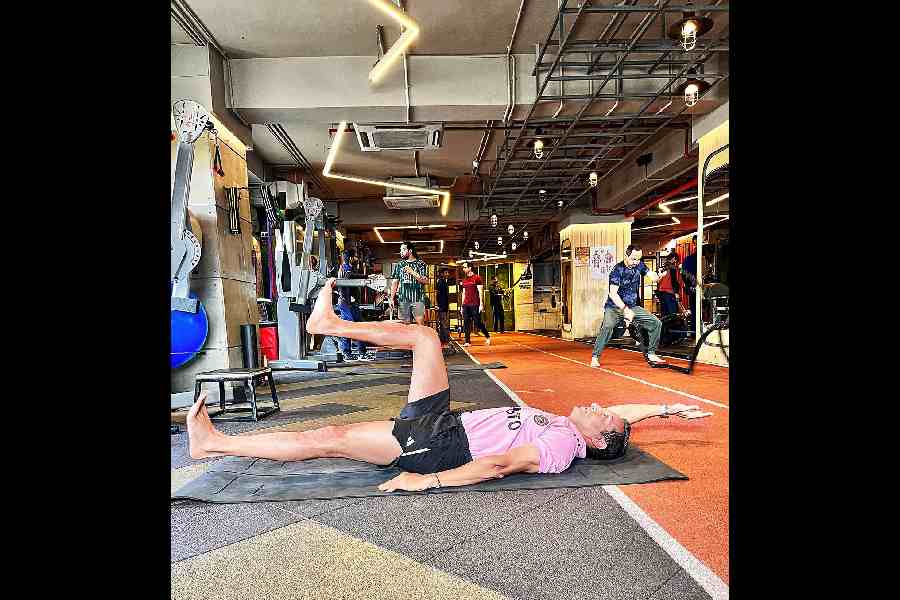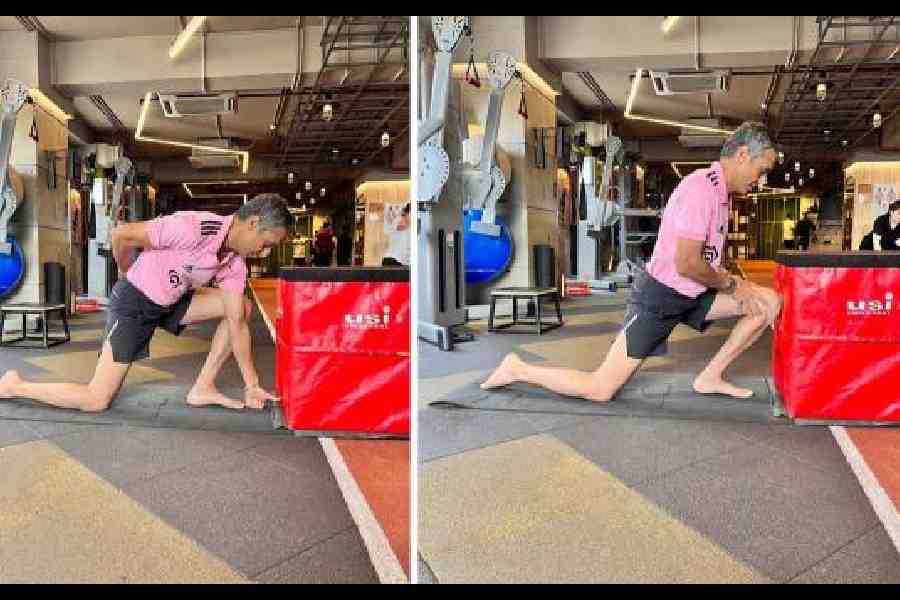As a clinical exercise specialist dedicating the last 20 years of my life trying to relieve pain and disability in myself as well as my clients, one question keeps baffling me a lot: Is there a secret to becoming pain-free? When I speak of pain it is not only in a reactive context but largely as a part of preventive medicine that attempts to anticipate future trauma and misery based on present symptomatic dysfunctions.
Over the years, my battle with pain has helped me understand that while pain is very complicated and multifactorial and (perhaps) deeply rooted in neural and limbic patterns, movement plays a big role in cracking that puzzle. Mobility and stability are the most important components of that puzzle. Clinical therapists need to understand the role that mobility and stability play in both pre-habilitation as well as rehabilitation. There is, however, another very important concept called the principle of regional interdependence that is perhaps the most critical aspect in identifying and eliminating musculoskeletal pain. Regional interdependence means that each part or region of the body depends on the surrounding parts or regions of the body to move and function properly. If one part of the body lacks adequate mobility or stability, that is going to have an impact on the joints above and below it.
Different strokes
Some joints need to be very mobile while others need to be stable. For example, our lower back is built for stability while the hips below that and the upper back (thoracic spine) above it are meant for mobility. If any of these joints get their roles reversed, it might put the body at risk of getting injured. Let me explain further. If the hips lack mobility, they will not be able to efficiently extend the hips. The lower back muscles (that need to be primarily used for stability) then step in and try to fulfil the deficit force created by weak hip extension from the hips. This goes against the nature of the lower back muscles and is a classic case of “false loading” or overloading.
ANKLE MOBILITY
The ankle is a mobile joint and needs to be assessed and trained for mobility. Normal ankle range of motion in the knee-to-wall test is around five inches to 12.5 inches but I like dancers and impact athletes to have at least 10 inches — this more or less works out to about 15-20 degrees of dorsiflexion and roughly around one hand's width from the wall. This test can be performed in a half-kneeling position and the goal is to touch your knee to the wall while keeping the heel on the ground.

POKER SPINE
The Dead Bug Exercise is a great way to teach you to keep a “poker” spine while movement takes place in the distal joints, mainly both pair of limbs. In many ways, it is anti-extension exercise as one is required to prevent the low back from arching as the arms and legs extend and flex. This is an extremely effective exercise to develop stability in the lumbar spine.
LUMBAR STABILITY
The lumbar spine (lower back) should be capable of rock-like stability while the glutes below it have to be strong and mobile. In my practice, I have found just the opposite. I see a lot of overactive (hyper-mobile) lower backs while the butt muscles are weak and lax. This is arguably the most common reason for back pain, knee pain and hip pain.
The single-leg glute bridge is both a great test for lumbar stability and glute activation. To perform this test (as well as the exercise) you will need to keep one knee bent at about 90 degrees, push through the heels and lift your hips off the ground by primarily using your butt muscles.
Holding it for two seconds or so should be the criterion for a pass. Although you will be using your entire posterior chain for this exercise, you want to feel your glutes working the hardest during this movement. If you feel your lower back or quads are involved too much in this test, it is an indication that they are overactive and need to be stretched and inhibited. They are obviously dominating your glutes and that is not a happy situation.

KNEE STABILITY AND THORACIC MOBILITY
The inability to stabilise the knee in the frontal plane is a big challenge which a lot of people struggle with due to weak hips and this, in my opinion, is a big reason for knee pain. The glutes medius is a muscle in the lateral aspect of the upper thighs attaching it to the hip bone (ilium) above and is responsible for adduction and external rotation of the thighs. If the glute med is weak then the knee tends to cave in (knee valgus) during walking, running, step climbing and so on (most activities that load the lower body) and can wear out the hyaline cartilage of the knee joint. We use the single-leg step-down as both a test as well as a training protocol for the gluteus medius. The cue and the goal would be to track the knee over the second and third toe. To return to the central theme of this article — if you lack strength and coordination in the hips, you are in danger of causing damage to your knees. The source and site of the pain are separate.
Once the lower back muscles get overloaded, they tend to get hypertonic and may cause a change in the architecture of the vertebrae in the lower back. The facet joints in these vertebrae may get misaligned. Often, this may lead to pathology in the discs of the lower back. The main region of the body above the lumbar area is the thoracic spine. The thoracic spine is a “mobile” joint, meaning that ideally it should have good mobility. In a well-functioning body, the lumbar spine remains “quiet” and stable while the region above it, that is the thoracic spine, and the area below it that is the hips, remain free-flowing and supple, not rigid and restricted.
The above example is a case of regional interdependence where the lower back depends on the hips to fire appropriately. You may experience pain in one place of the body. But the interesting thing is that a lot of time, that is not the offending part/parts that is/are responsible for the pain. A radiological image may show abnormality in the lower back vertebrae or discs, but the causative factor or etiology lies elsewhere — in the dysfunction at the hips. To think that the problem lies right at the site of the pain is an extremely nearsighted way of looking at things. Diagnosis for the cause of pain and suggesting a remedy based on radiological findings goes against the very root of clinical diagnosis and ironically certainly not the way Hippocrates intended it to be.
Let’s hash out another example to really drive home the principle of interdependence. Knee pain is extremely common in our society, particularly with women. While the knee may develop symptoms, it is imperative to assess the main joints that lie above and below the knee. These would be the hip and the ankle, which are both mobile joints while the knee is a stable joint. If we diagnose some mobility issues in the hips and ankle, it would be reasonable to assume that the knee was trying its best to compensate and fulfil the deficit at the ankle and/or hips. Restoring good mobility in the hips and ankle has a great chance of easing knee pain. This is independent of any pathology that may exist in the knee, including some that may indicate surgery as the initial response.
Irony of the body
Modern industrialised movement restrictions as well as the popularity of body-building and yoga-based exercises taught in majority of gyms ensure that the joints that should ideally be mobile are very stiff while joints where we need more stability and stiffness tend to be mobile and even lax. Generic exercise patterns that encourage too much flexibility without proper strengthening protocols can ultimately cause pain in the long run. Please bear in mind that excessive stretching and then some more of it is NOT the panacea or a cure for pain. Many yoga practitioners encourage flexibility across the body in a very generic way — I find this approach irresponsible and dangerous.

Ranadeep Moitra
If we lack mobility in the joints that we especially need it from, the body will find the motion it needs from surrounding joints that need to be more stable. When we lack strength and coordination in the muscles that surround the joints, which we need to be more stable, we run the risk of destroying the natural kinetic chain of the body and risk pain and injury.
